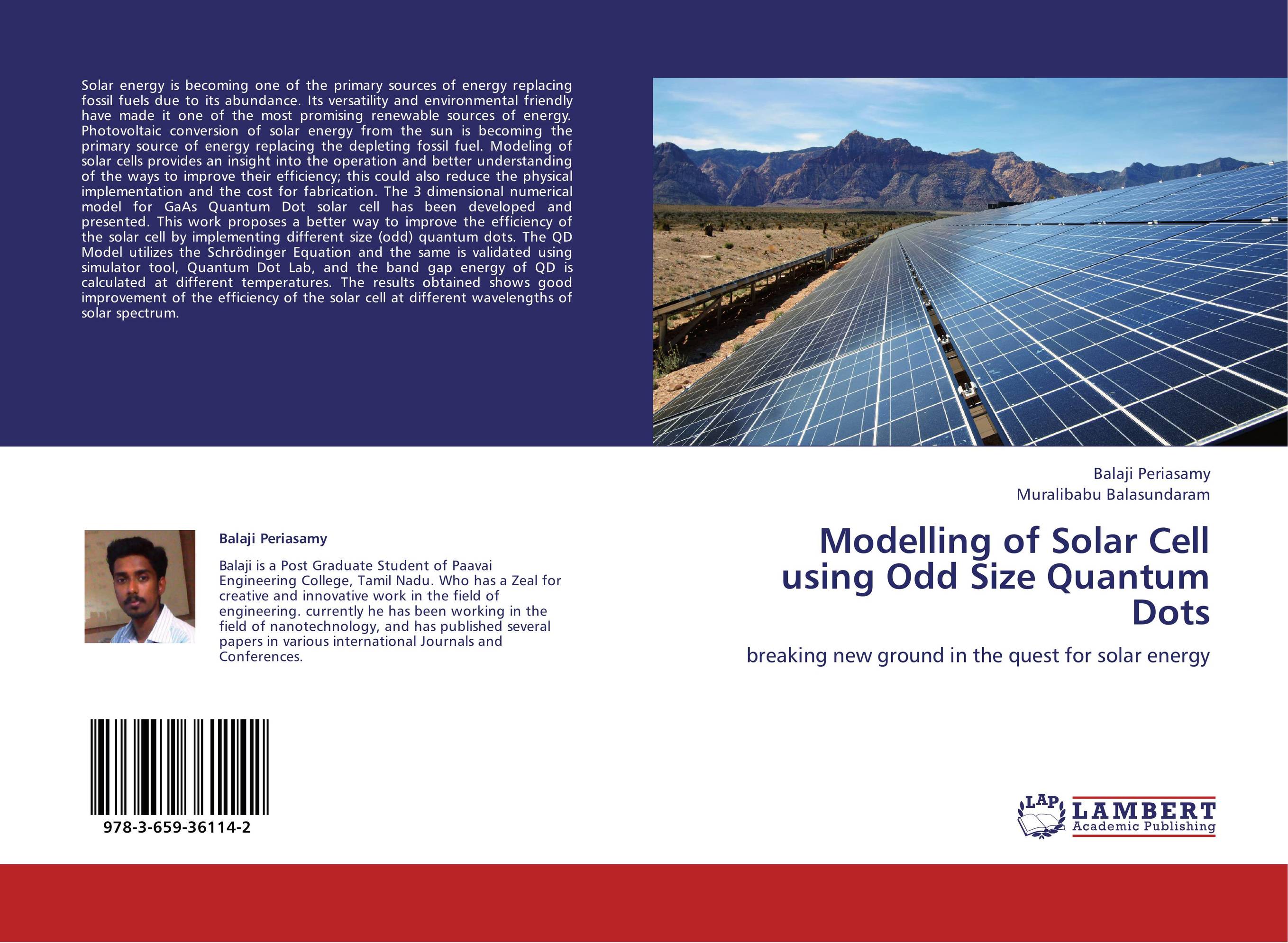| Поиск по каталогу |
|
(строгое соответствие)
|
- Профессиональная
- Научно-популярная
- Художественная
- Публицистика
- Детская
- Искусство
- Хобби, семья, дом
- Спорт
- Путеводители
- Блокноты, тетради, открытки
Modelling of Solar Cell using Odd Size Quantum Dots. Breaking new ground in the quest for solar energy

В наличии
| Местонахождение: Алматы | Состояние экземпляра: новый |

Бумажная
версия
версия
Автор: Balaji Periasamy and Muralibabu Balasundaram
ISBN: 9783659361142
Год издания: 2013
Формат книги: 60×90/16 (145×215 мм)
Количество страниц: 68
Издательство: LAP LAMBERT Academic Publishing
Цена: 30074 тг
Положить в корзину
Позиции в рубрикаторе
Отрасли экономики:Код товара: 120072
| Способы доставки в город Алматы * комплектация (срок до отгрузки) не более 2 рабочих дней |
| Самовывоз из города Алматы (пункты самовывоза партнёра CDEK) |
| Курьерская доставка CDEK из города Москва |
| Доставка Почтой России из города Москва |
Аннотация: Solar energy is becoming one of the primary sources of energy replacing fossil fuels due to its abundance. Its versatility and environmental friendly have made it one of the most promising renewable sources of energy. Photovoltaic conversion of solar energy from the sun is becoming the primary source of energy replacing the depleting fossil fuel. Modeling of solar cells provides an insight into the operation and better understanding of the ways to improve their efficiency; this could also reduce the physical implementation and the cost for fabrication. The 3 dimensional numerical model for GaAs Quantum Dot solar cell has been developed and presented. This work proposes a better way to improve the efficiency of the solar cell by implementing different size (odd) quantum dots. The QD Model utilizes the Schr?dinger Equation and the same is validated using simulator tool, Quantum Dot Lab, and the band gap energy of QD is calculated at different temperatures. The results obtained shows good improvement of the efficiency of the solar cell at different wavelengths of solar spectrum.
Ключевые слова: Simulation, Numerical Modelling, Modelling, Nanotechnology, solar cell, Quantum Dot, Schrodinger Equation, Equation, Schrodinger Equation, solarcell, nanohub, nano



